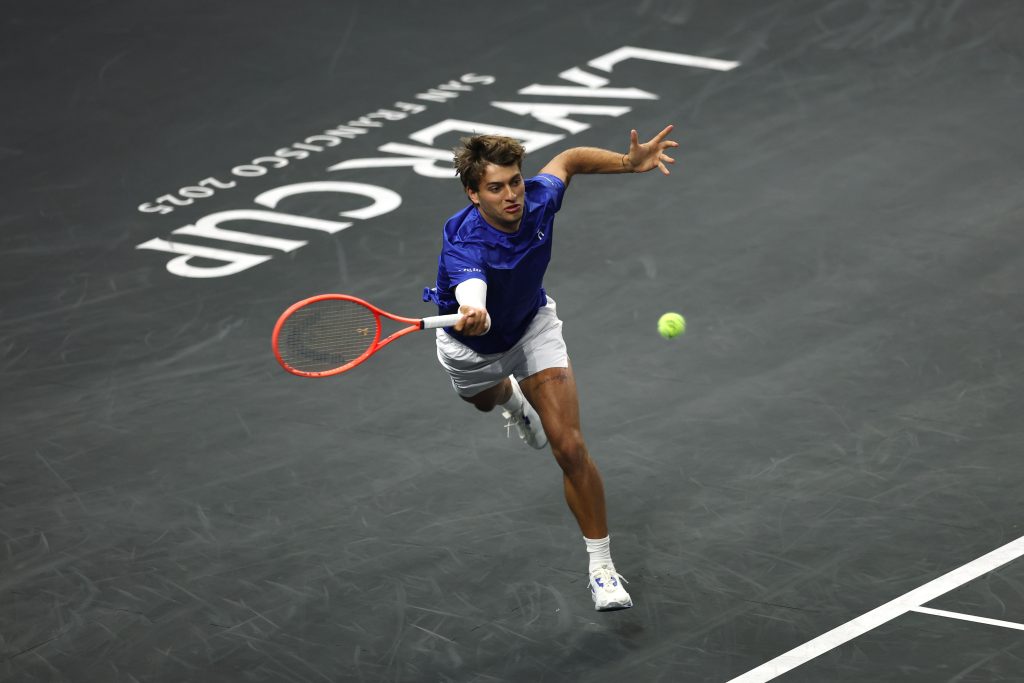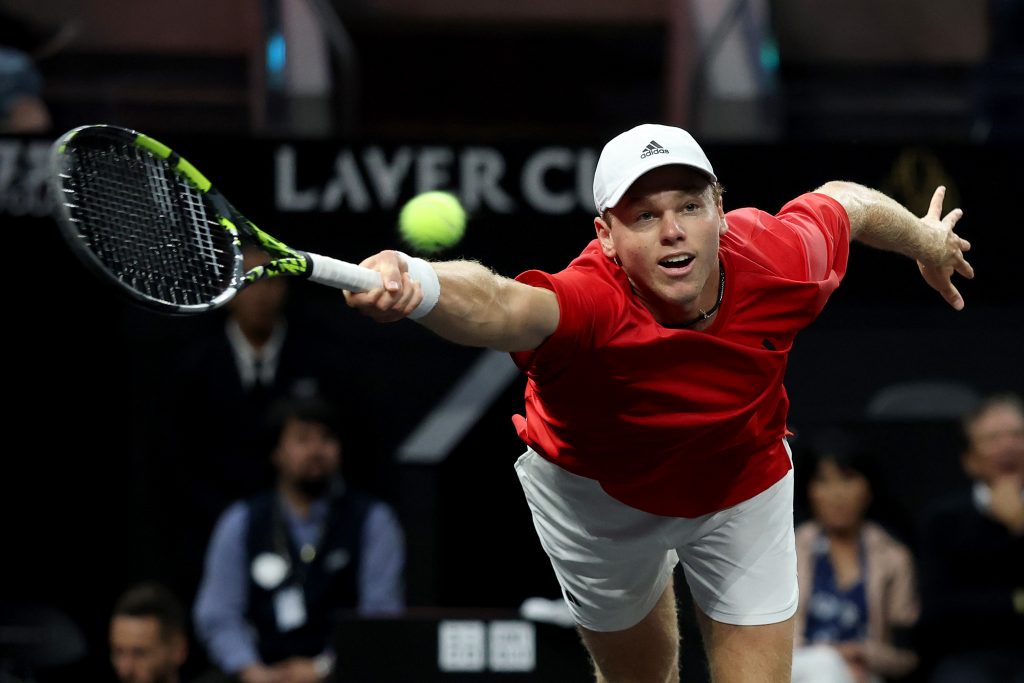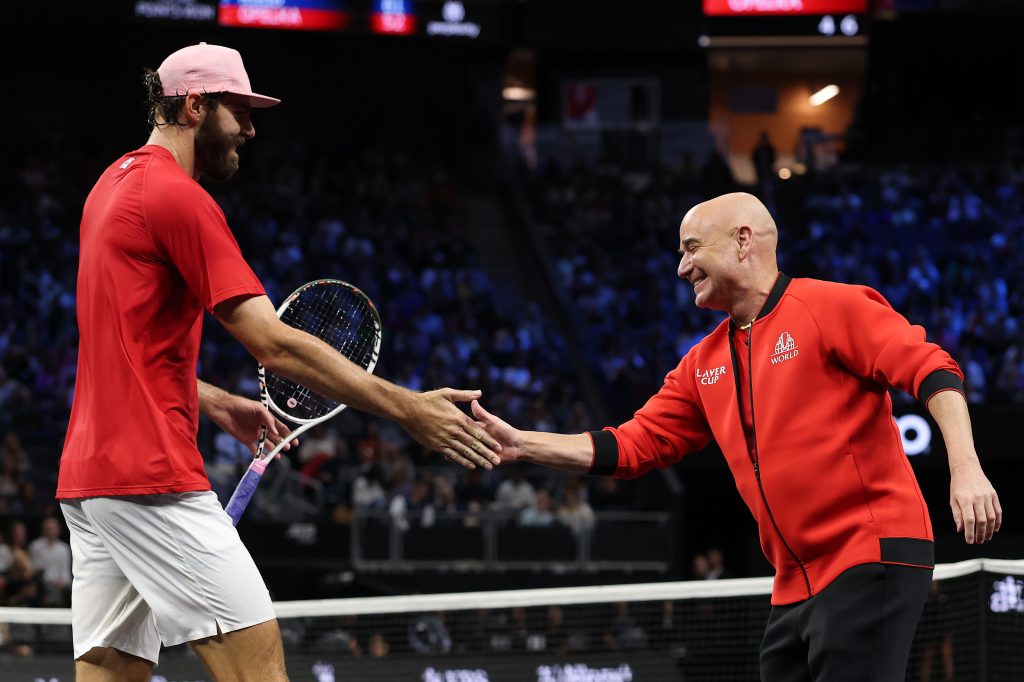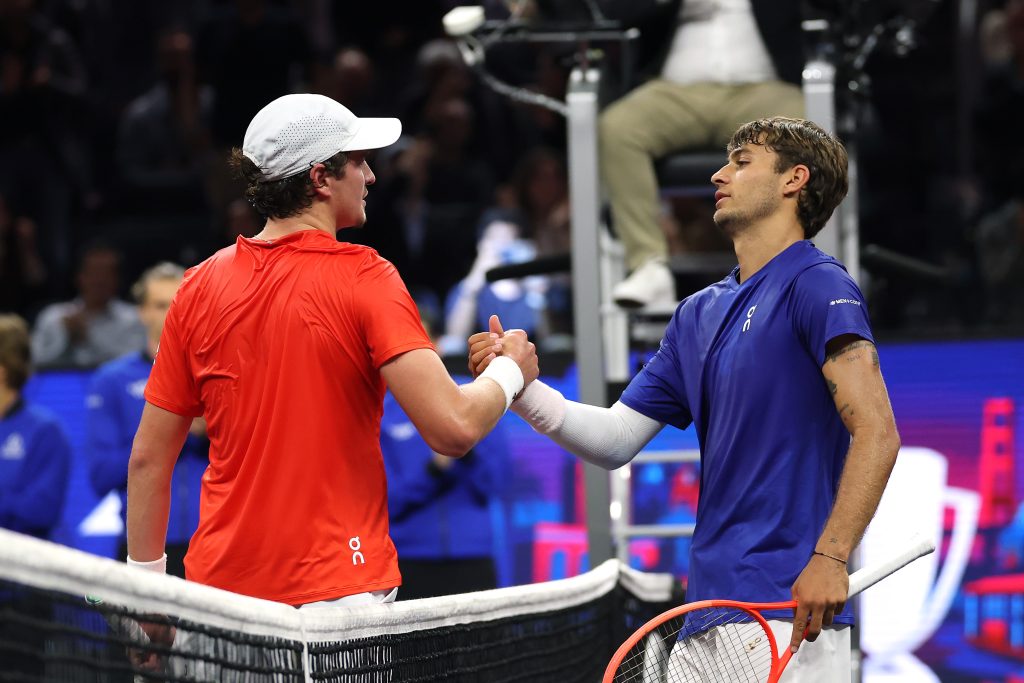San Francisco, September 19–21, 2025 — The Bay Area became the global stage for tennis as the Laver Cup returned with three days of competition at the Chase Center. More than a series of matches, the weekend reflected the event’s growing reputation: a tournament that combines the intimacy of team camaraderie with the intensity of international rivalry.

The Weight of History
Since its inception, the Laver Cup has celebrated both the sport’s traditions and its future. Team Europe dominated the early years, while Team World, once cast as underdogs, has steadily asserted itself. Even in this year’s tournament, Team World faced early setbacks due to the withdrawal of key players and entered the competition as clear underdogs. Coming into San Francisco, Europe carried the legacy of star power and past victories, but Team World arrived with confidence, seeking to secure a third title in four years. In the last few years Team World seems to have made a major comeback in the breadth of its team.
Day 1: Europe Sets the Tone
Friday play gave Europe an early advantage. Casper Ruud opened with trademark consistency, dictating rallies and striking first blood. Jakub Menšík followed with a poised victory that underscored Europe’s depth of talent. Team World answered in singles to prevent a sweep, yet Europe closed the evening with a doubles win that pushed them ahead 3–1. The atmosphere in the arena was expectant — Europe looked steady, but the crowd sensed a long weekend lay ahead.

Day 2: Team World Responds in Force
Saturday proved to be the turning point of the tournament, with the competition becoming more engaging and the Chase Center reaching full capacity. With the crowd overwhelmingly cheering for Team World, every match belonged to Team World, each now carrying double value on the scoreboard. Alex de Minaur started with a major upset and set the tone with relentless energy, wearing down Alexander Zverev in straight sets. Francisco Cerúndolo edged past Holger Rune in one of the weekend’s most closely fought contests, his determination on big points defining the match. Then came Taylor Fritz, who produced perhaps the most striking win of the weekend by defeating Carlos Alcaraz, who is currently ranked #1 in the world. The upset silenced Europe’s bench and ignited Team World’s, whose celebrations echoed throughout the arena. By day’s end, the scoreboard told a different story: Team World had seized control.

Day 3: Closing with Authority
Europe attempted to rally on Sunday. Carlos Alcaraz and Casper Ruud paired for an inspired doubles performance, narrowing the gap and reigniting the contest. But the hope proved short-lived. Taylor Fritz, already the hero of Saturday, stepped back onto the court with composure. Against Alexander Zverev, he struck a balance of power and patience, closing out the match in straight sets. With that, Team World sealed a 15–9 victory, leaving the crowd on its feet as the players embraced on court.

The Essence of the Laver Cup
Beyond the scoreboard, what sets the Laver Cup apart is its team dynamic. Players who usually stand alone leaned on each other — coaching from the bench, celebrating each point, and living the highs and lows together. Moments of mentorship from the former World’s best tennis players Andre Agassi and Patrick Rafter, seemed to provide a level of confidence for the less experienced Team World. For the fans, it was a rare glimpse into the human side of a sport often defined by solitary battles.

A Defining Chapter
For Team World, this victory was more than a trophy. It was a statement that the balance of power has shifted, and that the rivalry with Europe now feels truly equal. There is major hope that the rising stars of tennis may come from outside of Europe in the next generation of tennis. For San Francisco, the event reinforced the city’s ability to host world-class spectacles outside of basketball and football, pairing the energy of its sports culture with the elegance of an international tennis showcase.

As the players packed up and the arena lights dimmed, the 2025 Laver Cup left behind more than match results. It delivered storylines of resilience, unity, and rivalry that will carry into next year — proof that the tournament has matured into one of the sport’s most distinctive and anticipated stages.
